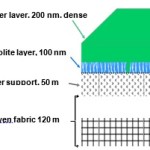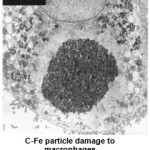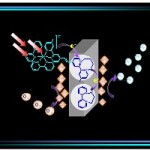Our research focuses on chemical approaches to problems associated with energy and environment. Current areas of research include
- Solar energy conversion
- Carbon dioxide (CO2) sequestration
- Environmental/health – related sensor development
- Toxicity of engineered particles
The unifying theme in this research is the manipulation of materials at the nanoscale designed to develop novel chemical functionality. Detailed information about our research is accessible from the group publications. Here we provide a brief overview of the current projects:
The goal is to use a zeolite photoactive membrane (see figure) to facilitate visible light mediated charge transport. Coupling the charge separated species with catalysts is the current focus of this project, with particular interest in zeolite supported cobalt and manganese oxides for oxidation of water to oxygen.
 Carbon dioxide (CO2) sequestration
Carbon dioxide (CO2) sequestration
This is a collaborative project with Professor Winston Ho from the Chemical and Biomolecular Engineering department . We are developing polymer-zeolite composite membranes (see figure) for efficient separation of CO2 from N2, with particular focus on coal-fired power plants.
Optimizing combustion processes via use of sensors is the ultimate goal of this project. By appropriate choice of ceramic materials and catalysts, and using novel fabrication methods of integration, we are developing CO2, CO, NOx, NH3 and O2 electrochemical sensors. Makel Engineering Inc. is an important partner in this project. We are also examining how sensor technology can be adopted to health applications, with particular focus on NOx sensors for breath monitoring for asthma diagnosis. (Air-reference free O2 sensor shown in figure)
 Toxicity of Engineered Nanoparticles
Toxicity of Engineered Nanoparticles
The Dutta group has had a long-term collaboration with Professor W. James Waldman in the OSU Medical School to examine toxicity of particles. Our current focus is on toxicity of engineered nanoparticles used by the food industry. We are developing both in vitro and in vivo models of toxicity regarding the toxicity and fate of ingested nanoparticles, with primary focus on inorganic.


